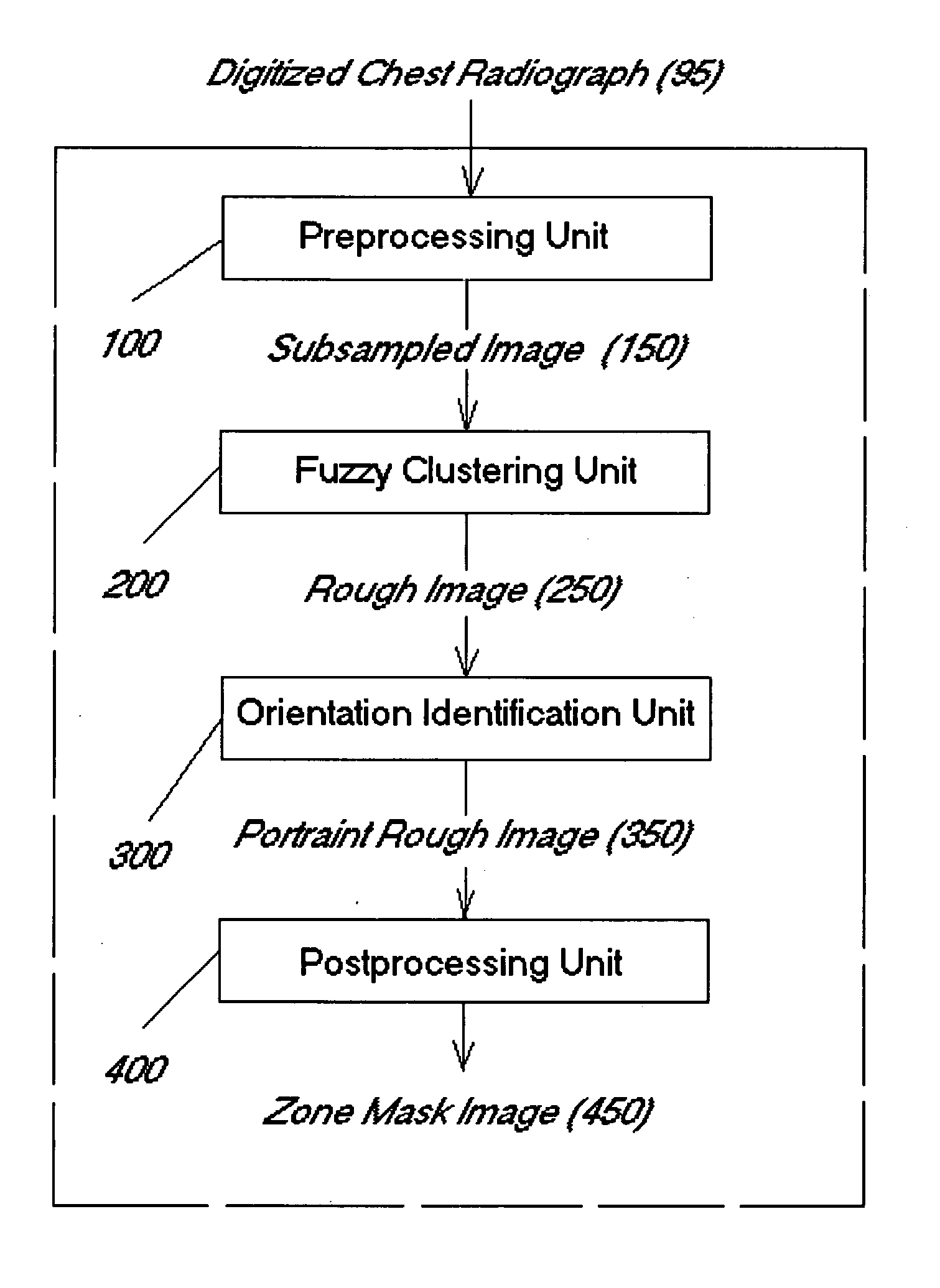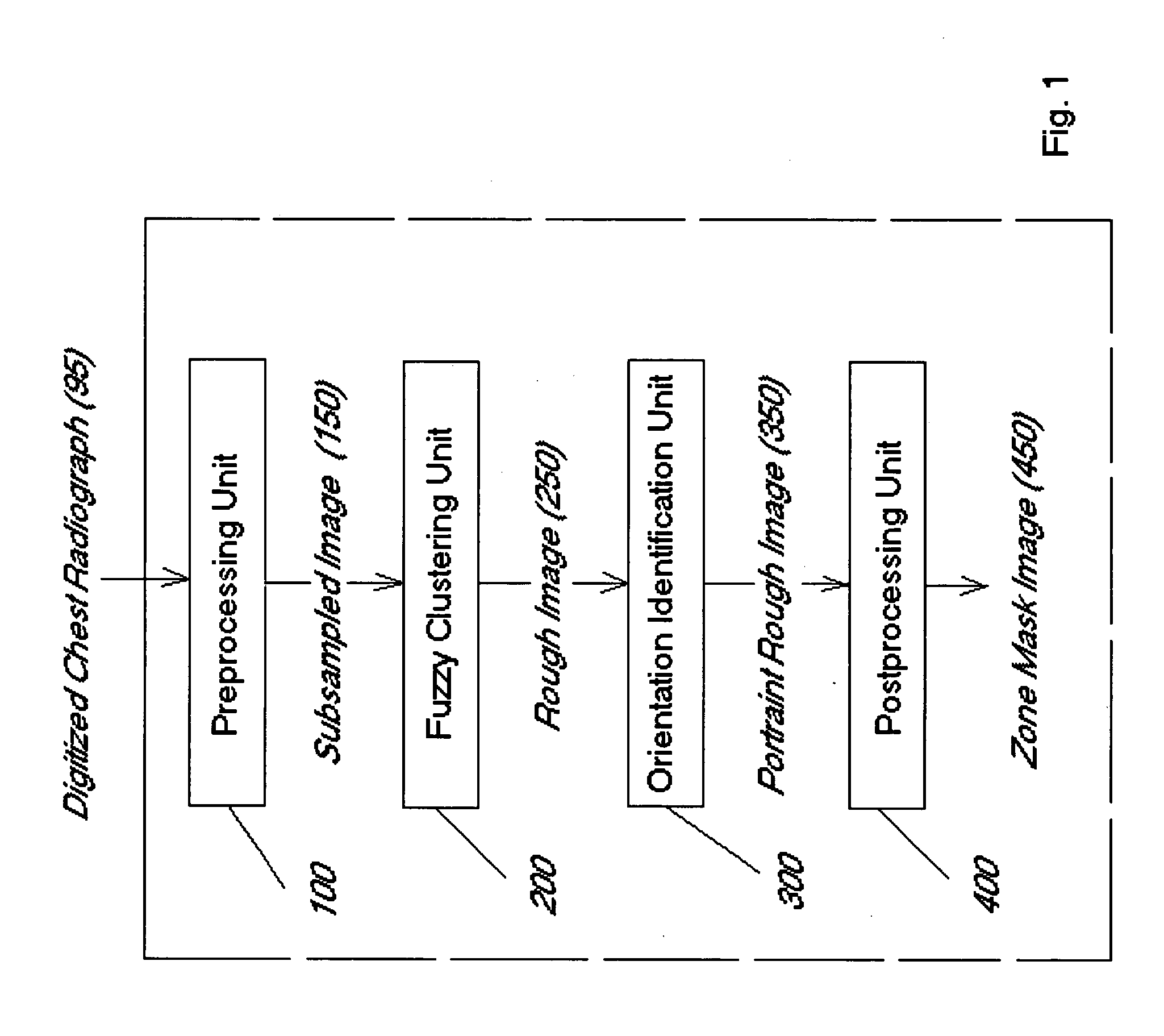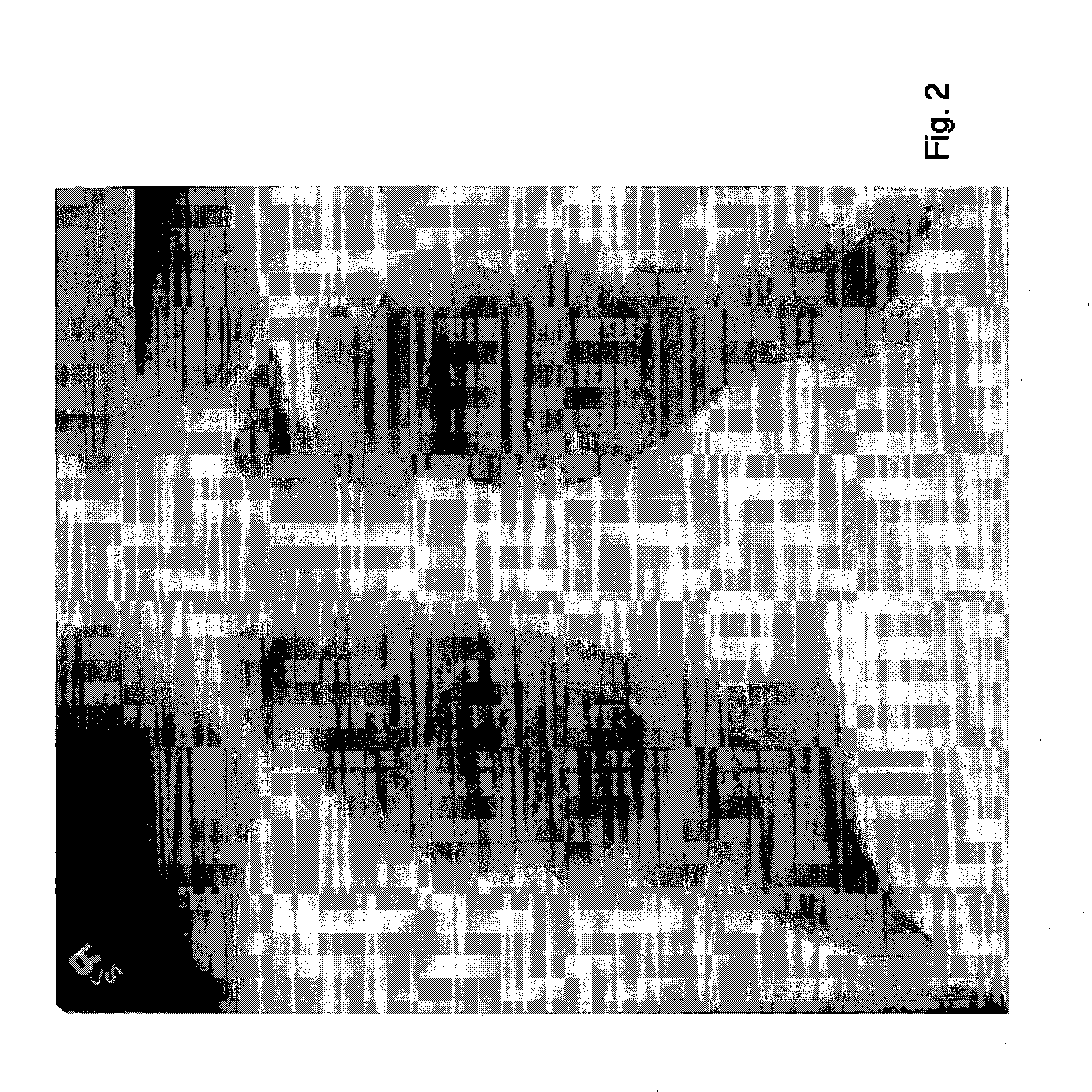Adaptive segmentation of anatomic regions in medical images with fuzzy clustering
anatomic region and fuzzy clustering technology, applied in image enhancement, image analysis, medical science, etc., can solve the problems of inability to inability to directly compare the performance of these various techniques, and inability to accurately detect lung nodules in chest radiography
- Summary
- Abstract
- Description
- Claims
- Application Information
AI Technical Summary
Benefits of technology
Problems solved by technology
Method used
Image
Examples
Embodiment Construction
FIG. 1 is a schematic diagram of an embodiment of the invention. First, the digitized image is subsampled using a reduction factor of two to increase the speed of the computational process. This function is included in preprocessing unit 100 of the invention. Thus, an input image (95) of 525×637 will be reduced to an output image (150) of 267×319 after preprocessing. FIG. 2 is a digital chest portrait image of size 525×637. FIG. 3 is a digital chest landscape image of size 525×637. A flow chart of a preferred method for image subsampling is shown in FIG. 4. There, OI (original image) refers to the digital chest image. The I denotes the width of the original image in pixels, and J denotes the height of the original image in pixels.
Next is unit 200, the fuzzy clustering unit. According to a preferred embodiment of the invention, in this unit, a Gaussian clustering method (GCM) is employed. Fuzzy clustering is an unsupervised learning technique by which a group of objects is split up ...
PUM
 Login to View More
Login to View More Abstract
Description
Claims
Application Information
 Login to View More
Login to View More - R&D
- Intellectual Property
- Life Sciences
- Materials
- Tech Scout
- Unparalleled Data Quality
- Higher Quality Content
- 60% Fewer Hallucinations
Browse by: Latest US Patents, China's latest patents, Technical Efficacy Thesaurus, Application Domain, Technology Topic, Popular Technical Reports.
© 2025 PatSnap. All rights reserved.Legal|Privacy policy|Modern Slavery Act Transparency Statement|Sitemap|About US| Contact US: help@patsnap.com



